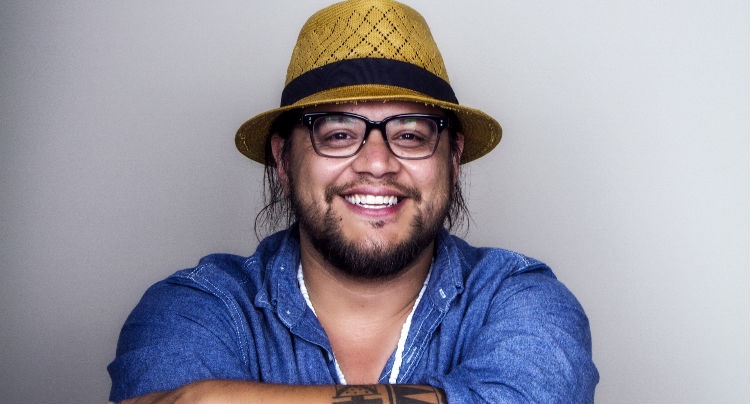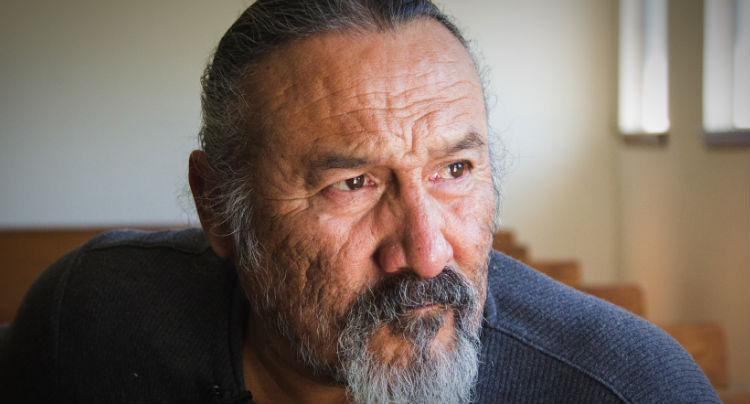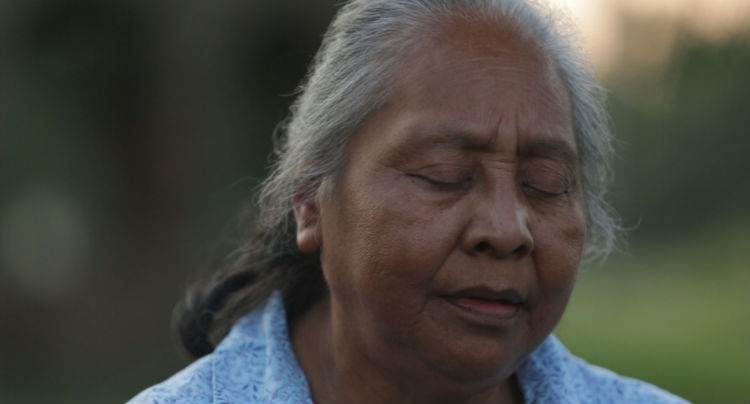Sterlin Harjo On Native Hymns: They Take You to Another Place

In his first documentary feature, This May Be the Last Time, Sterlin Harjo guides us through the history of the beautiful hymns Native Americans sing in times of loss, celebration, and remembrance. This isn’t a rigid historical doc, however, as Sterlin uses the story of his grandfather’s mysterious death to tie the film together and imbue it with soul. From the hymns’ unexpected ties to Scottish and African cultures; to a white man who finds peace in the hymns; to the truth about Sterlin’s grandfather’s fate, the film is full of surprises and revelations. As we hear his interview subjects sing the Native hymns, it’s as if we see them transported to another place, where generations past and present can connect and be together once again.
We chatted with Sterlin on the phone about the similarities between his film and Interstellar; the spiritual effect of the songs; masking the academic aspects of the film; how directing actors is similar to interviewing documentary subjects; staying at Skywalker Ranch; how his grandfather’s story wasn’t supposed to be in the film at all, and more.
This May Be the Last Time is available now on iTunes, ThisMayBeTheLastTime.com, and other VOD platforms.

Have you seen Interstellar yet?
I haven’t, man. I was trying to see it when I was in L.A. because I wanted to see it at the Arclight, but I haven’t gotten to see it yet.
I saw it the day before I saw your film, and the two have a lot in common, thematically. It’s about generations, parents connecting with their children through time travel. Tell me if I’m wrong, but I feel like there’s a time travel aspect to your film in that these songs connect you and your people with your ancestors.
Totally. I’d say that’s a good way to look at it. That’s what the songs do for sure: transcend time. They take you to another place. Whenever you talk to people about the songs, the first thing they always say is who the song reminds them of.
There’s a sense from some of the interviews in the film that when these people start singing these songs, the songs sort of escape their bodies like they’re not doing it themselves. A really spiritual thing.
You know what’s weird? I grew up with the songs, so whenever I hear them, they definitely [feels] otherworldly. That probably has to do with my memory of being young and everything that that’s involved with. The cool thing about being around people when they sing is that it almost washes over you. It’s like waves hitting you. When someone dies is when you hear the songs a lot. It’s like this mourning or wailing. It’s a very healing thing.
A key person in the making of the film was Hugh Foley, a white man. There’s a great scene with him, the one where he talks about the first time he was asked to sing a Native hymn in church. He said it “propelled” from his body.
He’s an amazing guy. He was the key to the film for me. I didn’t want the film to be academic. His personal story is the story of the history of the songs, so I could get academic by telling Hugh’s story.
Ah, so you used Hugh’s story to mask the academic aspects of the film in a way.
I tried at first just to do the academic story that Hugh told me, and it just didn’t feel right. Once I decided to tell the story of Hugh, then it became something that worked.
What’s it like being in a room being filled with the sound of people singing these songs?
That’s the key. The best way to hear it is with the songs surrounding you. There’s something that might not come across in the film that happens. People will very quietly stomp their feet, tapping their heel almost, as they sing. You can hear this thud going through the church.
Talk about the sound design. I’m sure it was really important.
Yeah. It’s a movie about songs, so we needed great sound. I got this guy who’s a really great sound recorder, Royce Sharp. We also lucked out because a guy at Skywalker Sound was super into doing the sound mix. We actually got to do our sound mix at Skywalker, which was pretty unbelievable. We got to stay on the ranch and have this guy work on the film. Then, we listened to it in one of the best sounding theaters that exists, so it was pretty amazing.

This is your first documentary feature, but you’ve done narrative pictures in the past. You’re a storyteller whether you’re making either, but have you noticed advantages or disadvantages to employing each form?
I just made a new film, which is narrative. It was a pretty big release to be able to shoot my script. With the documentary, there was so much footage to shape the story out of. But with a fictional film, the story’s already there, so there’s less footage. Both have their challenges. Working with actors is definitely similar to interviewing people. You have to pull performances out of people. I’d do all the interviews [in the doc], and it’s like working with an actor.
So being that you’ve had a lot of experience working with actors, did you feel that your interview skills were pretty solid once you started work on the documentary?
Yeah, totally. I’d also done a documentary TV show for two years with these people in Tulsa, OK called This Land Press, and they actually funded this film and produced it. The show was called This Land TV, and it was these really cool vignettes and short documentaries about these people in OK. I spend two years doing interviews for that, so I got really used to it. We were doing three or four short documentaries per episode, so it was great training for this film.
I love how in the film you outline the history of these songs and how they were born out of the meeting of Seminole Indians, Anglos, and Africans.
That was very important. As Native people, we sometimes like to think we’re the baddest Indians on the block. There’s the enemy, which is Europeans, but it’s not that cut-and-dry. There were a lot of different relationships between different people with different ethnicities, and it was important to me to show these cultural exchanges between these groups. You just don’t hear about that a lot.
The story about your grandfather really ties the film together well. I was surprised to learn that it wasn’t the jumping off point for the film, though.
I didn’t plan on doing the story of my grandfather at all. I was just going to tell it to bookend the film. I wasn’t going to be in it, my voice wasn’t going to be in it. I just started shooting, and I’d tell people that the film would be bookended with this story about my grandpa, and it kept happening that people would tell me, “Oh, I was there.” Sometimes, I’d already packed my camera gear up, and I’d have to set it up again. These people happened to be there and…I don’t like the word that much, but it was serendipity I guess. It was pretty amazing. It was this abstract story I loved and I had heard over and over and over, but as I filmed, it became real. There were people there, and they’re still around. I knew that it had to be a part of the film, and everything could be told through me, almost like I’m the bridge for the audience.
